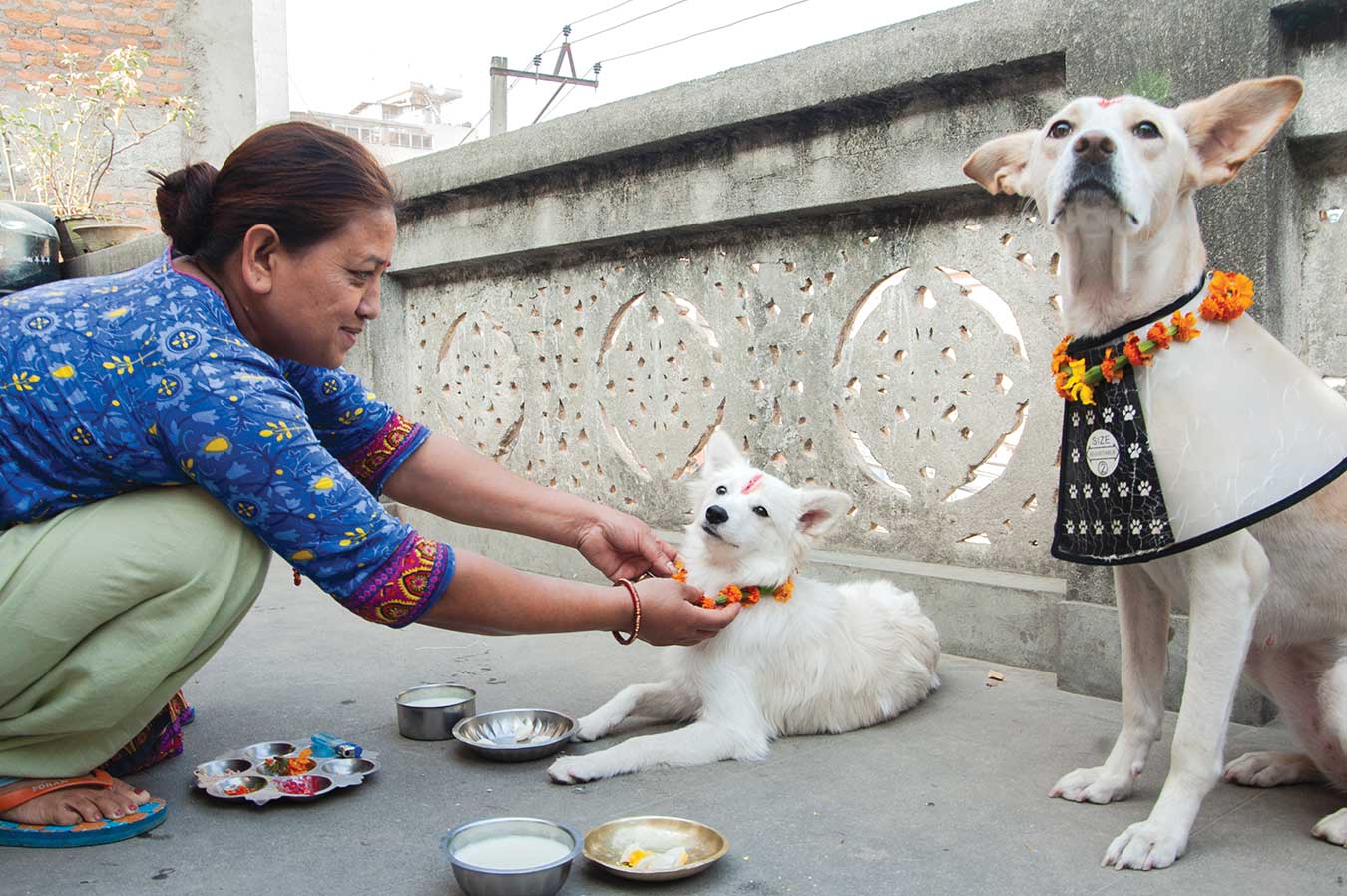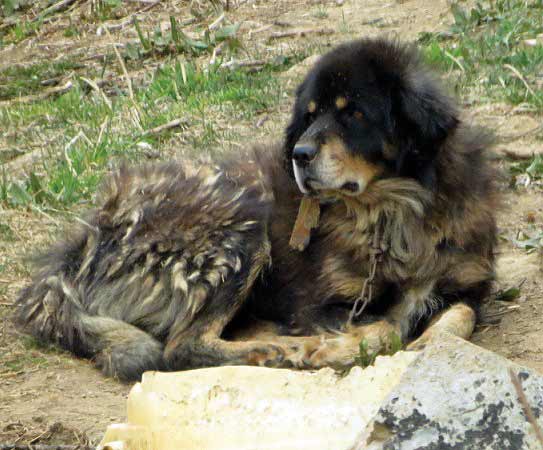 The festival of Tihar heralds winter, colorfully lighting up the skyline of cities and villages of Nepal. The upcoming festival is much awaited by all Nepalis. It is mostly remembered as a celebration with lights. We clean our houses and decorate them with flowers and oil lamps, now replaced by jazzy LED lights, to welcome Goddess Lakshmi, who bestows blessings of wealth and prosperity. After venerating the deity, everyone gets busy for Bhaitika, a day when sisters honor their brothers, praying for their wellbeing and long life. Sisters are busy preparing sweets and other goodies to gift their brothers and brothers are busy choosing gifts to present to their sisters. The festival is a celebration of human relations, between brothers and sisters, a reminder of the special bonding they share, the same family, the same home, and the same childhood. In a fast moving world, when we grow up and get entangled in our own lives, such festivals give us an opportunity to appreciate and respect our relationships with our siblings, thus nurturing them further.
The festival of Tihar heralds winter, colorfully lighting up the skyline of cities and villages of Nepal. The upcoming festival is much awaited by all Nepalis. It is mostly remembered as a celebration with lights. We clean our houses and decorate them with flowers and oil lamps, now replaced by jazzy LED lights, to welcome Goddess Lakshmi, who bestows blessings of wealth and prosperity. After venerating the deity, everyone gets busy for Bhaitika, a day when sisters honor their brothers, praying for their wellbeing and long life. Sisters are busy preparing sweets and other goodies to gift their brothers and brothers are busy choosing gifts to present to their sisters. The festival is a celebration of human relations, between brothers and sisters, a reminder of the special bonding they share, the same family, the same home, and the same childhood. In a fast moving world, when we grow up and get entangled in our own lives, such festivals give us an opportunity to appreciate and respect our relationships with our siblings, thus nurturing them further.
Although the above two rituals take precedence during Tihar, there are three more days to complete the five days of festivities. The other celebrations being:Kag (crow) Tihar, Kukur (dog) Tihar, Gai (cow) Tihar, and Govardhan (ox) Puja. On these days, offerings are made to the crow, dog, cow, and ox, respectively. Tihar is a celebration about humanbeings and their relations with ecology and its harmony. It teaches us to foster this harmony, respecting all living beings for the broader wellbeing of the world.
The five-day celebration of Tihar commences with Kag Tihar, when the crow is venerated for being a messenger who brings in news when it crows, and it is also considered to be the mount of Yama, or the ‘lord of death’. It is alsoappreciated because it feeds on the insects that infest and destroy the crops, Nepal being an agrarian society. When crows hover around growing crops, it is considered a good sign, and a healthy harvest is forecasted. Hence, on this day, a variety of food is offered to the crow in the morning to appease the bird to protect the crops and always bring in good news.
The next day is the day for the dogs. Since man settled and began to be civilized, the dog has been a loyal and trusted friend, much appreciated for their loyalty.Humans have a special bonding with dogs because they are smart and intelligent beings, who have the ability to empathies with their guardians and respond according to their emotions. They are able to interact with humans and understand gestures. On this day, dog owners pay respect to them by decorating them with flower garlands and redtika and offering them a special treat. The best part about this day is that, those who don’t own a dog venerate stray dogs and make the special offerings to them.
The third day is celebrated with much reverence and fanfare, for it is the day of Lakshmi Puja, when the goddess of wealth and prosperity is venerated. Houses are cleaned and decorated with marigold garlands, and in the evening lit with oil lamps, for it is believed that the goddess will visit the clean and well-decorated houses at dusk. Traditional food like selroti and anrasaand other sweets are prepared.This is also the day to venerate the cow, an animal held very sacred by Hindus. Humans have relied heavily on cows for dairy products, for tilling fields, and for dung as a source of fuel and fertilizer, hence cows are regarded as 'caretakers', or a maternal figure. The ritual for the goddess is conducted on the eve of the moonless sky. As dusk sets in, oil lamps and decorative lights are lit and fill the moonless nightscape as constellations in the sky. Another interesting feature in the evening of this day is bhailo, when groups of girls visit houses singing songs and performing dances, adding to the entertainment and merry-making of the festival. The performing group is rewarded with food and money, and they leave singing a traditional song asking the gods to bless the family with prosperity and good health.
The fourth day is Govardhan Puja, when the ox is venerated for its service to human kind. With the development of agriculture, humans transitioned from being hunters and gatherers to settling down. During this agrarian period, the ox played an important part to till the land and make agriculture easier. Oxen and bulls were also used to pull carts, the only form of land transport in ancient days. The evening has a different charm, on this day, young boys from the neighborhood take their turn to visit housesto sing songs and dance. Like the girls, they are also rewarded with treats and money and leave blessing the household with traditional songs. This performance is called deusi.
 This day also marks the beginning of thenew year for the Newar community, the original inhabitants of Kathmandu Valley, traditionally known as Nepal Mandala. This year brings the onset of 1139 Nepal Samvat calendar. The day is celebrated with much fanfare and a very special ritual of self-cleansing in the evening called Maha-puja.‘Maha’, in Newari language, means the body, or the self. The ritual is conducted in the evening; a special mandala is made on the ground for every person, both physically present and away. Eachperson sits on the floor in front of their respect mandala, which is a symbolic representation of the universe, serving as a receptacle for the gods and universal forces. It is made with colorful rice-flour and decorated with flowers and other offerings and lit with oil wicks. This is a ceremony pardoning one’s sins of the previous year and asking the gods for blessings for a prosperous year ahead. The ritual ends with a hearty feast of traditional Newar food and the most relished aila (alcohol).
This day also marks the beginning of thenew year for the Newar community, the original inhabitants of Kathmandu Valley, traditionally known as Nepal Mandala. This year brings the onset of 1139 Nepal Samvat calendar. The day is celebrated with much fanfare and a very special ritual of self-cleansing in the evening called Maha-puja.‘Maha’, in Newari language, means the body, or the self. The ritual is conducted in the evening; a special mandala is made on the ground for every person, both physically present and away. Eachperson sits on the floor in front of their respect mandala, which is a symbolic representation of the universe, serving as a receptacle for the gods and universal forces. It is made with colorful rice-flour and decorated with flowers and other offerings and lit with oil wicks. This is a ceremony pardoning one’s sins of the previous year and asking the gods for blessings for a prosperous year ahead. The ritual ends with a hearty feast of traditional Newar food and the most relished aila (alcohol).
The celebration of Tihar culminates with Bhaitika. Sisters apply tika on their brothers’forehead, offering sweets and festive goodies and blessing them. In return, the brothers bring special gifts to the sisters and each other pray for the prosperity and wellbeing of the other.
This festivalemphasizes the harmonious coexistence of humans with other sentient beings, and nurtures the balance of ecology, with an exchange and appreciation of feelings and gifts. It should be understood through its intrinsic meanings and cherished and continued, because it teaches us to be better humans..
SwostiRajbhandariKayastha
The author is a scholar of Nepalese culture, with special interest in art & iconography. She can be reached at swostirjb@gmail.com











